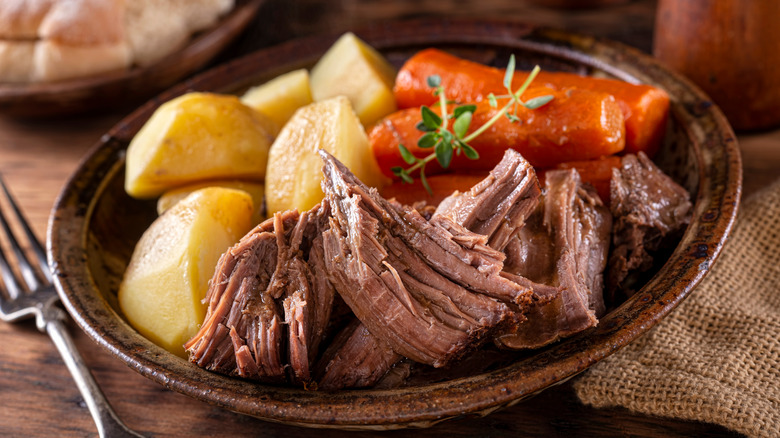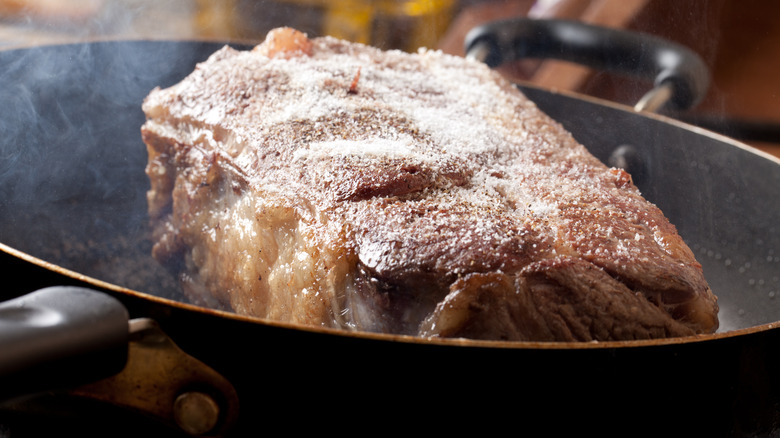The Real Reason You Should Brown The Meat For Pot Roast
If you've ever sunk a fork into the tender, braised piece of beef known as pot roast, then you know there's probably no cold-weather main dish more comforting on an icy winter night. It should come as no surprise then that pot roast hails from the frigid region of New England, according to Yankee Magazine, where recipes for large, tough cuts of beef braised with vegetables inside a covered pot have been appearing in regional cookbooks since at least the late 19th century.
Pot roast is an adaptable dish in which a number of cuts of beef can be used, as well as a variety of vegetables, legumes, and flavorings. But no matter how exactly it's prepared, a good pot roast should turn out meltingly tender, with a rich, flavorful sauce, states Yankee Magazine. Another pot roast rule? The cut of meat used — whether beef chuck, brisket, or bottom round roast — should be generously browned before the dish is set in the oven to braise.
Browning the meat for a pot roast adds a deep layer of flavor
In his 1955 memoir/cookbook "Grandma's Cooking," which contains more than 200 traditional New England recipes, journalist Allan Keller recalls his Connecticut grandmother browning her Yankee pot roast in a piece of suet (or beef fat) "the size of a large coffee cup," which was gifted to her by her butcher along with the piece of beef (via Yankee Magazine). So what did Keller's grandmother know that some modern-day cooks might forget? Browning a pot roast all over before setting it to braise in the oven is an indispensable step, one that doesn't lock in juices, as is sometimes mistakenly stated, but one that most definitely adds a deep layer of flavor to the finished roast.
Kitchn writes that the browned bits created as the meat is seared in the pan are "the culinary equivalent to gold," bringing tons of savory, caramelized notes once the pan is deglazed. And although browning a huge chunk of meat on all sides seems overly complicated, the outlet notes that the process really only adds a few minutes of prep time to the dish.
So the next time you're craving a hearty, tender pot roast, do as New England grandmas do, and brown your beef well before braising — whether you choose to use suet or a less old-fashioned fat.

